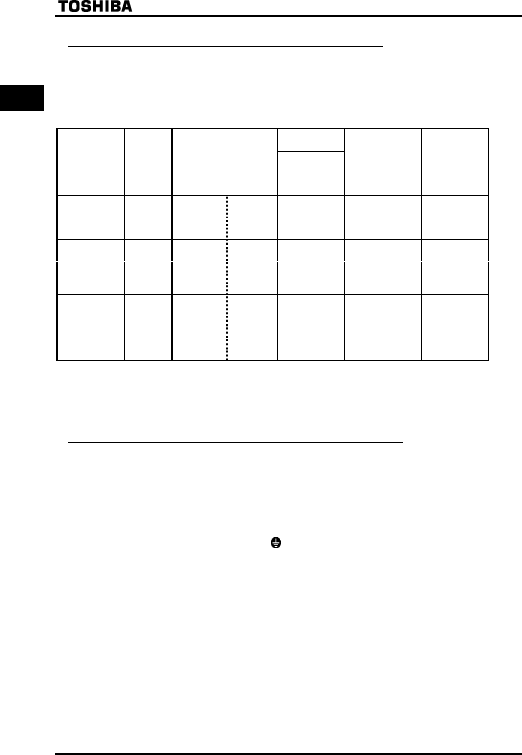
E6581090
A-16
1
■Calorific values of the inverter and the required ventilation
The energy loss when the inverter converts power from AC to DC and then back to AC is about
5-10 percent. In order to suppress the rise in temperature inside the cabinet when this loss
becomes heat loss, the interior of the cabinet must be ventilated and cooled.
Calorific
Values (W)
Voltage Class
Operating
motor
capacity
(kW)
Inverter Type
Carrier
frequency
12kHz
Amount of
forcible air
cooling
ventilation
required
(m
3
/min)
Heat
discharge
surface area
required for
sealed storage
cabinet (m
2
)
0.1
0.2
1001P
1002P
12
21
0.07
0.12
0.24
0.42
0.4 1004P 30 0.17 0.6
Single-Phase
100V Class
0.75
VFNC1S-
1007P 55 0.31 1.1
0.2 2002P(L) 21 0.12 0.42
0.4 2004P(L) 30 0.17 0.6
0.75 2007P(L) 55 0.31 1.1
1.5 2015P(L) 96 0.55 1.9
Single-Phase
200V Class
2.2
VFNC1S-
2022P(L) 126 0.72 2.5
0.1
0.2
2001P
2002P
12
21
0.07
0.12
0.24
0.42
0.4 2004P 30 0.17 0.6
0.75 2007P 55 0.31 1.1
1.5 2015P 96 0.55 1.9
Three-Phase
200V Class
2.2
VFNC1-
2022P 126 0.72 2.5
Notes
1) The heat loss for the optional external devices (input reactor, DC reactor, radio noise
reduction filters, etc.) is not included in the calorific values in the table.
2) Case of 100% Load Continuation operation.
■Panel designing taking into consideration the effects of noise.
The inverter generates high frequency noise. When designing the control panel setup,
consideration must be given to that noise. Examples of measures are given below.
• Wire so that the main circuit wires and the control circuit wires are separated. Do not place
them in the same conduit, do not run them parallel, and do not bundle them.
• Provide shielding and twisted wire for control circuit wiring.
• Separate the input (power) and output (motor) wires of the main circuit. Do not place them in
the same conduit, do not run them parallel, and do not bundle them.
• Ground the inverter ground terminals ( ).
• Install surge suppressor on any magnetic contactor and relay coils used around the inverter.
• Install noise filters if necessary.


















